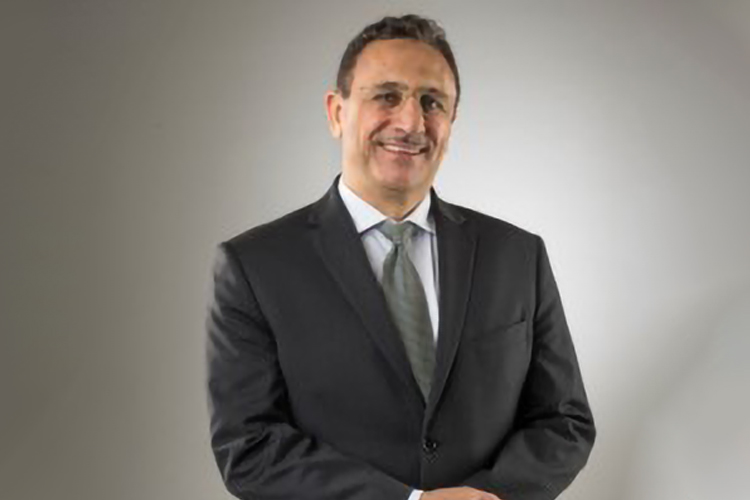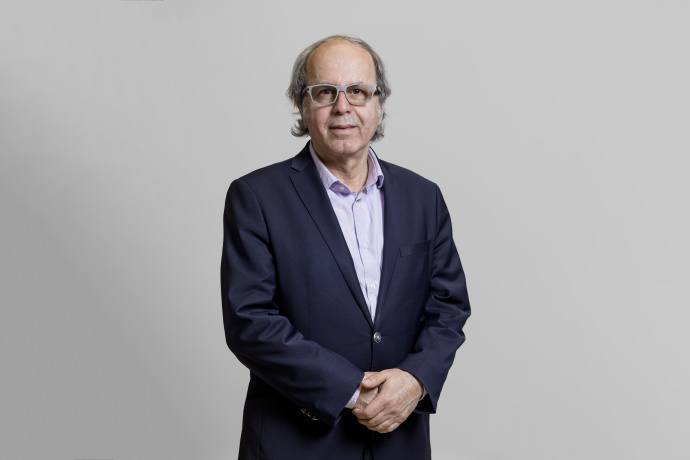International Symposium on Green Technologies and Applications
December 27-29, 2023 – Casablanca, Morocco
Hybrid : In-person and Virtual Symposium
ISGTA 2023 Keynotes
Keynote #1
Title: Integrating green thinking: What matters now
Abstract:
What will it take to design, build, and operate the next generation city? What is the future of our urban spaces and neighbourhoods, which will be healthier, greener, mixed-use, compact, walkable, and enhance urban resilience?
In times of a changing profession, transforming society and a warming climate, Professor Steffen Lehmann will present strategies and actionable recommendations for urban transformation, health and well-being. Steffen is an esteemed author and pioneer of sustainable urbanism with a long list of published books (23) including the bestseller, ‘The Principles of Green Urbanism’ which he published in 2010. His latest books relevant to this keynote address include ‘Informality through Sustainability’ (Routledge, London, 2021) and ‘Urban Regeneration. A Manifesto’ (Palgrave MacMillan, London, 2019).
More information is here: www.si-architecture.com

Prof. Steffen Lehmann
Bio: Dr. Steffen Lehmann, Assoc. AIA, (born in Stuttgart, Germany) is an internationally recognized educator, scholar, author, designer, scientific researcher, and strategic leader. He is a tenured full Professor of Architecture and former Executive Director of schools of architecture, including the UNLV School of Architecture in Las Vegas. He is also Director of the interdisciplinary Urban Futures Lab, and CEO of the Future Cities Leadership Lab Institute, where he is translating a strategic outlook into programmatic initiatives and impact, dealing with a rapidly changing profession and transforming society. Before joining UNLV, Steffen Lehmann was the chair-holder of the UNESCO Chair for Sustainable Urban Development for the Asia-Pacific Region.
More info about Dr. Steffen Lehmann activities and publications can be found in: https://www.unlv.edu/people/steffen-lehmann
Keynote #2
Title: Renewable Energies Dominated Grid: Visibility, Opportunity, and Challenges
Abstract: Electric energy security is one of the most challenging tasks that faces humanity. The fluctuating cost, geopolitical conflicts, limited sources of fossil fuels, in addition to the need to reduce greenhouse gasses emissions, have made renewable resources very attractive in today’s world economy and energy mix. The potential for renewable energy resources is enormous as they can, in principle, continually meet many times the world’s current and future energy demand. Therefore, various types of renewable energies will have a significant share in the future world’s energy portfolio. Hence, various countries worldwide are now concentrating on advancing their share of renewable energy resources and targeting to dominate their grids with such clean energy. Accordingly, during the seminar it will be presented the future renewable energy dominated grid, prospectives and challenges associated with it. Finally, the talk will represent the impact of smart grid paradigm to enable the domination of renewable energy and power electronics in the future grid paradigm.

Prof. Haitham Abu-Rub
Bio: Dr. Haitham Abu-Rub is a professor at Texas A&M University at Qatar (TAMUQ) and holds two PhDs. Abu-Rub has research and teaching experiences at many universities in many countries including Qatar, Poland, Palestine, USA, and Germany. Abu-Rub has served for five years as the chair of Electrical and Computer Engineering Program at TAMUQ and is serving as the managing director of the Smart Grid Center at the same university. His main research interests include power electronic converters, renewable energy systems, electric drives, and smart grid. Abu-Rub is the recipient of many national and international awards and recognitions. He has published more than 500 journal and conference papers, six books, and six book chapters. Dr. Abu-Rub is a Fellow of the IEEE and Co-Editor in Chief of the IEEE Transactions on Industrial Electronics.
More info about Dr. Haitham Abu-Rub activities and publications can be found in: https://www.qatar.tamu.edu/programs/ecen/faculty-and-staff/dr.-haitham-abu-rub
Keynote #3
Title: (to be announced)
Abstract: (To be announced)

Prof. Kamal Al Haddad
Bio: Dr. Kamal Al-Haddad (Life Fellow, IEEE) received the B.Sc.A. and M.Sc.A. degrees from the University of Québec à at Trois-Rivières, Trois-Rivières, QC, Canada, in 1982 and 1984, respectively, and the Ph.D. degree from the Institute National Polytechnique, Toulouse, France, in 1988.,Since June 1990, he has been a Professor with the Electrical Engineering Department, École de Technologie Supérieure (ETS), Montreal, QC, Canada, where he has been the Holder of the Senior Canada Research Chair in Electric Energy Conversion and Power Electronics since 2002. He is currently a Consultant and has established very solid link with many Canadian industries working in the field of power electronics, electric transportation, aeronautics, and telecommunications. He successfully transferred and implemented 26 technologies to Canadian and international companies. His research interests include highly efficient static power converters, harmonics and reactive power control using hybrid filters, voltage level multiplier, and resonant and multilevel converters, including the modeling, control, and development of prototypes for various industrial applications in electric traction, renewable energy, power supplies for drives, and telecommunication.,Prof. Al-Haddad is also a member of the Academy of Sciences and a fellow of the Royal Society of Canada, and a Fellow Member of the Canadian Academy of Engineering. He was a recipient of the 2014 IEEE IES Dr. Ing. Eugene Mittelmann Achievement Award. He is also the IEEE IES President 2016–2017, an Associate editor of the IEEE Transactions on Industrial Informatics, and the IES Distinguished Lecturer. He has been elected the IEEE 2022 Division VI Director Elect.
More info about Dr. Kamal Al-Haddad activities and publications can be found in: https://www.etsmtl.ca/en/research/professors/kalhaddad/
Keynote #4
Title: Challenges in the development of (Photo)Electrochemical solar fuels technology
Abstract:
The production of fuels as a potential energy vector to store renewable energy on a large scale, plays a crucial role in sustainable global development. The development of novel materials as (Photo)Electrocatalysts to effectively produce molecular hydrogen (H2) or to reduce Carbone dioxide (CO2) are the most important fields of research and development (R&D). Furthermore, understanding hydrogen evolution reaction (HER) and oxygen evolution reaction (OER), the two key half- electrochemical reactions for efficient Power-to-Hydrogen (PtH) process are still challenging. This talk, provides a combination of theory and application skills in current and emerging photovoltaic technologies, with particular interest of the background to understand the concept of (photo)electrochemistry, and photocatalysis for hydrogen production. Thermodynamic free energy versus kinetics (photo)catalytically-driven catalysis are discussed. The conversion of solar-to-chemical energy such as Hydrogen (STH) efficiency are explored in term of fundamental experimental methods (Lab set-up). Hydrogen can contribute to 100% energy transition production offering a solution to lower emissions in the chemicals manufacturing (e.g. Haber–Bosch process) for the production of ammoniac (NH3) as fertilizer or for the fixation of carbon oxides to manufacture methane (e.g. Methanation) with water (H2O) as byproduct. Hydrogen can be used for powering fuel cells to produce electricity in a Carbone free transport sector with heat and water as byproducts.
The context – Morocco is known to have a highest rate of solar insolation about 3,000-3,600 hours per year of sunshine. The country launched one of the world’s largest solar energy projects to increase the energy mix capacity to 52% by 2030-2050. The country is willing to create an economic and industrial sector around Power to Hydrogen (PtH), ammonia and methanol to consolidate its energy transition and to decarbonize its industry. Universities and capacity building through the development of new knowledge, new understanding and new insights, is providing effective solutions to complex problems
Key words – Photovoltaics, (Photo)Electro Catalytic Processes and green fuel production

Prof. Ahmed Ennaoui
Bio: Prof. Dr. Ahmed Ennaoui was born and grew up in south Morocco. He obtained his MSc and Doctoral thesis in Solid State Electronic from “University de Bourgogne”, France. He began his career as assoc. Professor in 1979 at University Mohamed V and joined the Hahn-Meitner Institute-Berlin (HMI) in 1983 for conducting research for his Habilitation. In April 1987, he obtained his habilitation (summa cum laude) on new earth abundant materials for solar energy conversion. In 2000, he was appointed head of a research group in the Institute for Heterogeneous Material Systems at Helmholtz-Zentrum Berlin (HZB) for materials and energy. He serves as visiting professor at the Research Center for Solar Energy Chemistry Osaka University, Japan, and Research Director at Qatar Environmental and Energy Research Institute (QEERI) and Joint Professor at Hamad Bin Khalifa University (2015-2017). Ennaoui’s published mostly on transition metal chalcogenide, binary and ternary thin film solar cells. Recently he conducted research on inkjet printed thin film solar cells, and PV soiling solution.
Keynote #5
Bio: Mr Ismael SAADOUNE, Full Professor at Mohammed VI Polytechnic University, was graduated from the University of Bordeaux, France (French PhD, 1992) and the University Cadi Ayyad UCA-Marrakech, Morocco (Moroccan PhD, 1996). These Two PhDs were in Material Science with the specific research topic ‘Active Materials for Lithium and Sodium-ion Batteries’. In 2002, He created the Laboratory of Materials and Environmental Chemistry. More than 100 graduate and 40 Master students were hosted in his Lab. 25 PhD Students have been under his supervision, all of them are now involved in the Industry or in research laboratories. He is the principal investigator of 19 national and 23 international research funded projects on Battery Materials. He was involved in two European Master ERASMUS MUNDUS: ‘Materials for Energy Storage and Conversion’ and ‘Functionalized Advanced Materials and Engineering’.
Prof Ismael Saadoune is actually member of the Moroccan Association on Analytical Chemistry for sustainable development where is responsible for the development of green chemistry for the development of active materials for Lithium-ion Batteries for application of renewable energy storage and electrical mobility.
Prof SAADOUNE was invited in many prestigious universities/research centers (Uppsala University, Sweden; KIT, Germany; ICMM Spain). He has authored/co-authored over 160 articles, conference papers, and project reports.
GOOGLE SCHOLAR: https://scholar.google.fr/citations?user=zgCkaZwAAAAJ&hl=fr
ORCID ID: 0000-0003-1322-361X

Prof. Ismael SAADOUNE
Title: Understanding the Chemistries of Lithium-Ion Batteries to Explain the Recent Implementation of Gigafactories in Morocco
Abstract:
Over the past three months, several prominent Chinese groups have revealed their plans to establish operations in Morocco for the production of electric batteries. Morocco, indeed, offers optimal conditions to attract such gigafactories, including the presence of strategic mineral resources essential for the development of competitive Lithium-ion Batteries.Lithium-ion Batteries (LiBs) represent the cutting-edge technology for applications in Electric Vehicles and the storage of intermittent renewable energies. Essentially, an LIB consists of two electrodes, namely the cathode (positive electrode) and anode (negative electrode), separated by an ionic conductive electrolyte, generating voltage through the potential difference between the two electrodes. The performance of LiBs is intricately linked to the chemistry of the cathode materials.
In this context, we will delve into the chemistries of various electrode materials and electrolytes in connection with the available mineral resources in Africa.
Acknowledgements: The author would like to thank OCP-FOCP-UM6P for the financial support through TechDev Chair.
